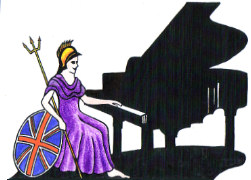Teachers, Accompanists and Piano Entertainers in the UK

UK Piano Page

251 Kings Road
Chelsea
Chelsea, London
England
Chelsea London was founded on the famous King's
152 - 160 Wardour Street
Soho, London W1F 8YA
England
For nearly two hundred years we have sold upright
184 St. Ann's Road
Haringey, London N15 5RP
England
J. Reids supply new and fully restored pianos from
142 Edgware Road
Marble Arch, London W2 2DZ
England
Jaques Samuel Pianos has been providing pianos
36 New Yatt Road
witney
Witney, Oxfordshire ox28 1nz
England
Mildren Pianos is based in Witney, Oxfordshire.
Music Festival for performers and guests Our 10th
18-06-2022 01:30PM
The Morecambe Bay Piano Group was set up to extend
11-12-2021 02:00PM
The Morecambe Bay Piano Group was set up to extend
08-01-2022 02:00PM
The Morecambe Bay Piano Group was set up to extend
12-02-2022 02:00PM
Violin
A single violin is made from over 70 individual pieces of wood. the string tension is around 12 LBS compared to a pianos 160lbs on the steels and 20% more on the wound strings.